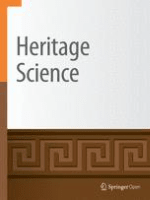
Heritage Science
Scope & Guideline
Fostering Critical Discussions in Heritage Science
Introduction
Aims and Scopes
- Conservation Science:
The journal explores methodologies for the conservation of various cultural heritage materials, including textiles, ceramics, and architectural structures, utilizing scientific techniques such as spectroscopy, chromatography, and nanotechnology. - Digital Heritage:
A significant focus is placed on the digital preservation and reconstruction of heritage sites and artifacts through techniques like 3D modeling, digital imaging, and virtual reality, enhancing accessibility and understanding of cultural heritage. - Cultural Heritage Management:
Research on effective management practices for cultural heritage sites, including sustainability and community involvement, is highlighted, emphasizing the link between heritage conservation and socio-economic development. - Material Analysis:
The journal includes studies on the characterization and analysis of materials used in historical artifacts, employing techniques such as X-ray fluorescence and Raman spectroscopy to understand their composition and degradation mechanisms. - Interdisciplinary Approaches:
Heritage Science promotes interdisciplinary collaboration, integrating perspectives from archaeology, history, art conservation, and environmental science to address complex issues related to cultural heritage preservation.
Trending and Emerging
- Artificial Intelligence and Machine Learning:
The application of AI and machine learning techniques for the analysis and restoration of cultural heritage artifacts is on the rise, showcasing the potential for automation and improved accuracy in heritage science. - Sustainability in Heritage Conservation:
There is an increasing focus on sustainable practices in conservation, including the use of eco-friendly materials and methods, reflecting a growing awareness of environmental impacts in heritage management. - Impact of Climate Change:
Research addressing the effects of climate change on cultural heritage sites is becoming more prominent, highlighting the urgent need for adaptive strategies in conservation efforts. - Community Engagement and Public Participation:
Emerging themes emphasize the role of local communities in heritage conservation, promoting participatory approaches that involve stakeholders in decision-making processes. - Integration of Digital Tools:
The use of digital tools for documentation, analysis, and public engagement in cultural heritage is increasingly prevalent, reflecting a trend towards enhancing accessibility and interaction with heritage through technology.
Declining or Waning
- Traditional Techniques:
There appears to be a declining emphasis on traditional conservation techniques in favor of more technologically advanced methods, reflecting a broader trend towards innovation in heritage science. - Pure Historical Studies:
Papers focusing solely on historical narratives without integration of scientific methodologies have become less common, suggesting a shift towards more empirical and data-driven research. - Localized Case Studies:
While localized case studies were previously prevalent, there is now a trend towards broader, more comparative studies that integrate findings across multiple regions, indicating a shift in research scope.
Similar Journals
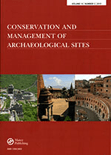
Conservation and Management of Archaeological Sites
Exploring Innovative Strategies for Site Management.Conservation and Management of Archaeological Sites is a pivotal academic journal published by Routledge Journals, Taylor & Francis Ltd, focusing on the interdisciplinary fields of archaeology and conservation. With an ISSN of 1350-5033 and an E-ISSN of 1753-5522, this journal strives to publish high-quality research that addresses critical topics related to the conservation and management of archaeological sites, fostering dialogue between practitioners, researchers, and policymakers. Despite being categorized in the third quartile (Q3) across multiple relevant categories such as Archaeology and Conservation in the 2023 rankings, it remains a significant resource for professionals seeking to enhance their understanding and application of best practices in site management. The journal plays a crucial role in disseminating knowledge that contributes to the preservation of cultural heritage, making it an essential read for anyone involved in these vital fields. Published since 1995, the journal not only reflects the growing importance of archaeology in today's society but also provides a platform for emerging research that will shape future conservation strategies.
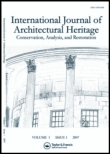
International Journal of Architectural Heritage
Championing the Art of Conservation and Architecture.The International Journal of Architectural Heritage is a premier publication dedicated to the multidisciplinary fields of architecture, conservation, and visual arts. Published by TAYLOR & FRANCIS INC, this journal serves as a vital platform for scholars and practitioners who aim to advance knowledge in the preservation of cultural heritage and architectural innovation. With an impressive impact factor reflecting its critical acclaim, including rankings in the top quartile (Q1) across multiple categories in 2023, the journal is recognized as a key resource in Arts and Humanities, particularly in Visual Arts and Performing Arts and Conservation. Since its inception in 2007, the journal has consistently provided rigorous peer-reviewed research, offering enriching insights and fostering collaborations amongst students, researchers, and professionals committed to the future of architectural heritage. As it continues to influence the field through its diverse and impactful contributions, readers can expect to engage with leading-edge studies that not only illuminate current trends but also inspire innovative practices in safeguarding architectural legacies.
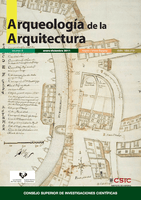
Arqueologia de la Arquitectura
Exploring the Nexus of Heritage and InnovationArqueologia de la Arquitectura is a premier scholarly journal published by CONSEJO SUPERIOR INVESTIGACIONES CIENTIFICAS-CSIC, specializing in the intricate intersections of architecture, archaeology, and conservation. Since its inception in 2002, this Open Access journal has provided researchers, professionals, and students with a platform to share innovative findings that deepen our understanding of architectural heritage and its archaeological contexts. Based in Spain, it has demonstrated remarkable academic rigor and impact, achieving Q1 rankings in multiple categories, including Architecture and Visual Arts and Performing Arts, alongside a Q2 in Archaeology as of 2023. With a robust presence in Scopus, ranking within the 88th percentile for Visual Arts and Performing Arts, Arqueologia de la Arquitectura stands as a crucial resource for those dedicated to the preservation and study of our built heritage, encouraging interdisciplinary dialogue and research advancements in these elegant fields of study.
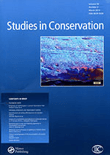
STUDIES IN CONSERVATION
Connecting Scholars to Drive Conservation ForwardSTUDIES IN CONSERVATION, published by Routledge Journals, Taylor & Francis Ltd, stands as a premier peer-reviewed journal in the field of conservation, holding a distinguished Q1 ranking in the Conservation category for 2023. With its origins dating back to 1952 and poised to continue through 2024, this respected journal provides a vital platform for disseminating high-quality research and innovative practices aimed at the preservation of cultural heritage and natural environments. The journal boasts an impressive Scopus rank of #15 out of 103 within its category, reflecting its influential role in shaping the dialogue among researchers, professionals, and students dedicated to conservation efforts. While Open Access options are not currently available, the journal remains accessible to a broad readership eager to engage with its in-depth analyses and critical studies that address urgent conservation challenges. The editorial team seeks to promote diverse perspectives and foster interdisciplinary collaboration, making STUDIES IN CONSERVATION an essential resource for anyone committed to advancing the field of conservation.
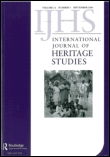
International Journal of Heritage Studies
Championing the preservation of our shared history.Welcome to the International Journal of Heritage Studies, a prestigious publication dedicated to advancing knowledge in the fields of heritage conservation, cultural studies, and museology. Published by Routledge Journals, Taylor & Francis Ltd in the United Kingdom, this journal boasts an impressive impact ranking, positioned in the Q1 category for multiple disciplines, including Conservation and Cultural Studies, and a remarkable HIndex indicative of its influence within academia. With a history spanning from 1994 and continuing to 2024, the journal serves as an essential platform for researchers, professionals, and students aiming to contribute to the dynamic discourse surrounding heritage preservation and cultural management. Although the journal does not offer open access, it remains a vital resource for those interested in the nuanced intersections of heritage and society, as evidenced by its high ranks in various academic categories. The International Journal of Heritage Studies is committed to fostering innovative research and critical analysis in its field, inviting submissions that explore diverse methodologies and theoretical perspectives.

MUSEOLOGIA SCIENTIFICA
Connecting Scholars and Practitioners in MuseologyMUSEOLOGIA SCIENTIFICA is a distinguished journal dedicated to the study and advancement of museology, published by the ASSOCIAZIONE NAZIONALE MUSEI SCIENTIFICI in Italy. Focusing on a wide array of topics within the realm of science museums, the journal offers rich insights and research findings that shape the future of museum practices and education. Although currently not an open-access publication, MUSEOLOGIA SCIENTIFICA provides a vital platform for scholars, practitioners, and students interested in the preservation, curation, and display of scientific artifacts. By contributing to the discourse on innovative museum practices, the journal plays a crucial role in enhancing the professional standards within the field while promoting collaboration among museums worldwide. We invite researchers and practitioners alike to explore its valuable content, aimed at broadening understanding and knowledge in the ever-evolving landscape of museology.
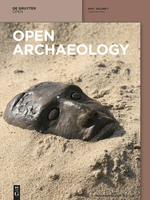
Open Archaeology
Advancing Archaeological Knowledge Through Open AccessOpen Archaeology is a distinguished open-access journal dedicated to publishing high-quality research in the fields of archaeology, conservation, and education. Since its inception in 2015, the journal has established itself under the esteemed publication of DE GRUYTER POLAND SP Z O O, experiencing rapid growth and recognition, culminating in a Q1 ranking in both Archaeology and Conservation categories as of 2023. Based in the vibrant academic environment of Poland, Open Archaeology caters to a global audience, illustrated by its Scopus rankings which position it 16th in Conservation and 69th in Archaeology, showcasing its significant impact in the arts and humanities sphere. The journal aims to foster interdisciplinary discourse and disseminate innovative research findings to enhance understanding and preservation of cultural heritage. With an unwavering commitment to open access, it encourages widespread dissemination of knowledge, making it an invaluable resource for researchers, professionals, and students alike.

RESTAURATOR-INTERNATIONAL JOURNAL FOR THE PRESERVATION OF LIBRARY AND ARCHIVAL MATERIAL
Navigating the Future of Library and Archival Care.RESTAURATOR-INTERNATIONAL JOURNAL FOR THE PRESERVATION OF LIBRARY AND ARCHIVAL MATERIAL, published by WALTER DE GRUYTER GMBH in Germany, is an esteemed scholarly journal dedicated to the conservation and preservation of library and archival materials. With a history spanning from its first publication in 1970, this journal has become a vital resource for professionals, researchers, and students in the fields of conservation, materials science, and media technology. The journal holds a Q2 classification in Conservation and positions itself within the top 30% of its peer category, reflecting its commitment to quality research and innovative practices. Although the journal is not open access, it offers invaluable insights into preservation methodologies, case studies, and advances in materials technology, supporting the ongoing dialogue within the conservation community. Its indexed presence in Scopus, especially notable in the Arts and Humanities and Engineering categories, further underscores its relevance and impact in shaping contemporary practices in conservation.

Chinese Archaeology
Exploring the Rich Tapestry of Chinese HeritageChinese Archaeology, published by WALTER DE GRUYTER GMBH, is a leading journal dedicated to the exploration and study of China's rich archaeological heritage. With an ISSN of 2160-5025 and an E-ISSN of 2160-5068, this journal serves as an essential platform for scholars, researchers, and enthusiasts in the field of archaeology, offering a blend of original research articles, reviews, and critical essays that address both contemporary issues and historical narratives. While it currently operates under a conventional access model, making cutting-edge research available to a select audience, it plays a crucial role in advancing knowledge about China's archaeological sites, artifacts, and past civilizations. Given the increasing interest in Eastern archaeology and its significance in a global context, Chinese Archaeology is positioned as a pivotal resource for understanding and interpreting the complexities of China’s historical evolution. Researchers and academics are encouraged to contribute and engage with this vital field of study to foster greater insights and innovations.
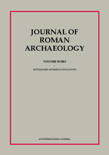
Journal of Roman Archaeology
Exploring Ancient Cultures through Rigorous ResearchJournal of Roman Archaeology is a premier academic journal published by CAMBRIDGE UNIVERSITY PRESS, dedicated to advancing knowledge in the fields of archaeology, classics, and visual arts. With its established reputation since 2005, the journal occupies a significant place in the scholarly community, featured in the Q1 quartile in both Classics and Visual Arts & Performing Arts categories, as well as Q2 and Q3 in Archaeology, reflecting its high impact and relevance. The journal not only presents rigorous research but also fosters interdisciplinary dialogue among researchers, professionals, and students across related fields. Although it does not operate under an open access model, it provides essential insights and critical analyses that contribute to understanding Roman archaeological practices and artifacts. With an ISSN of 1047-7594 and an E-ISSN of 2331-5709, the Journal of Roman Archaeology is an indispensable resource for anyone engaged in the exploration of ancient cultures, heritage preservation, and archaeological methodologies.